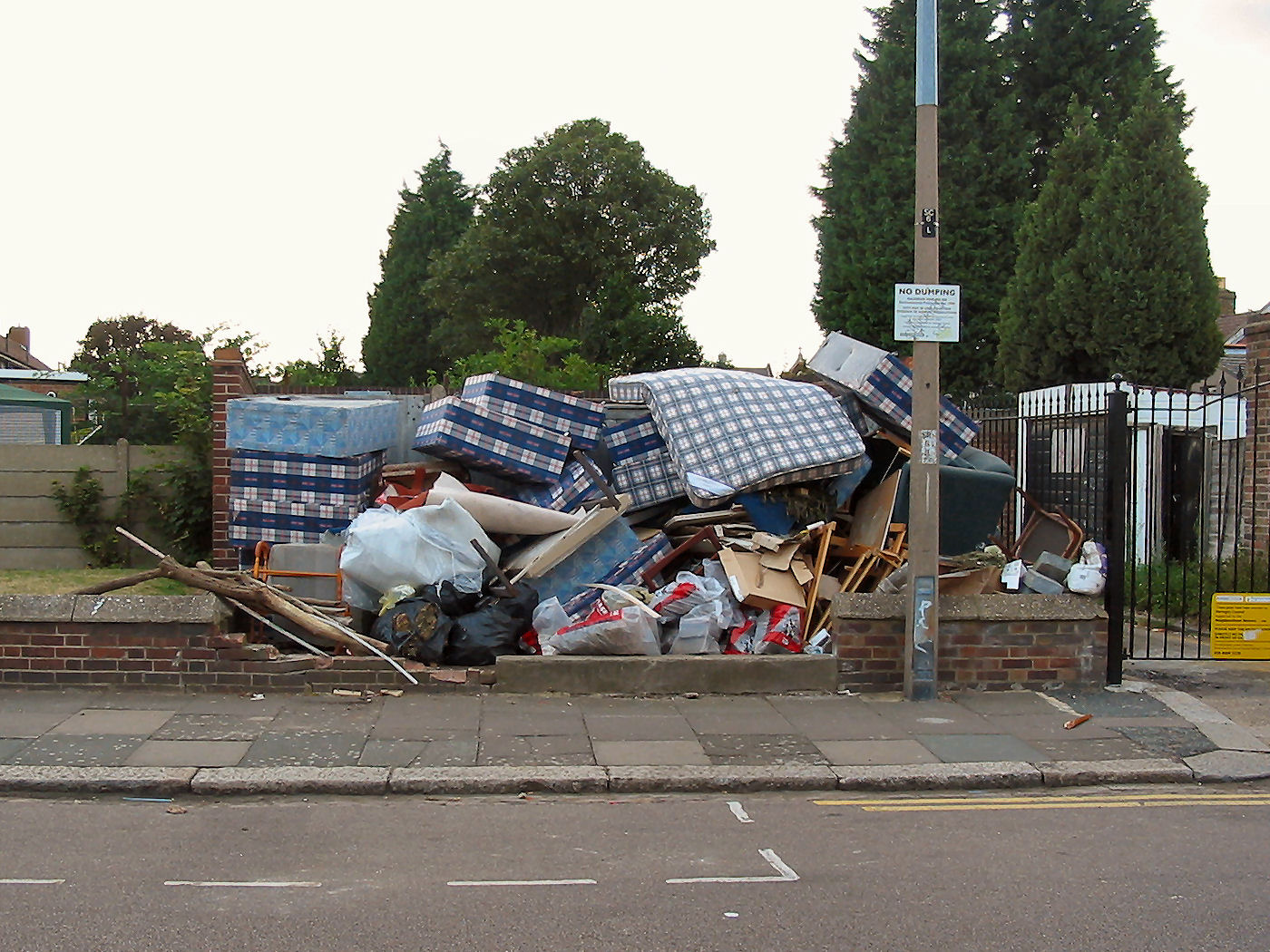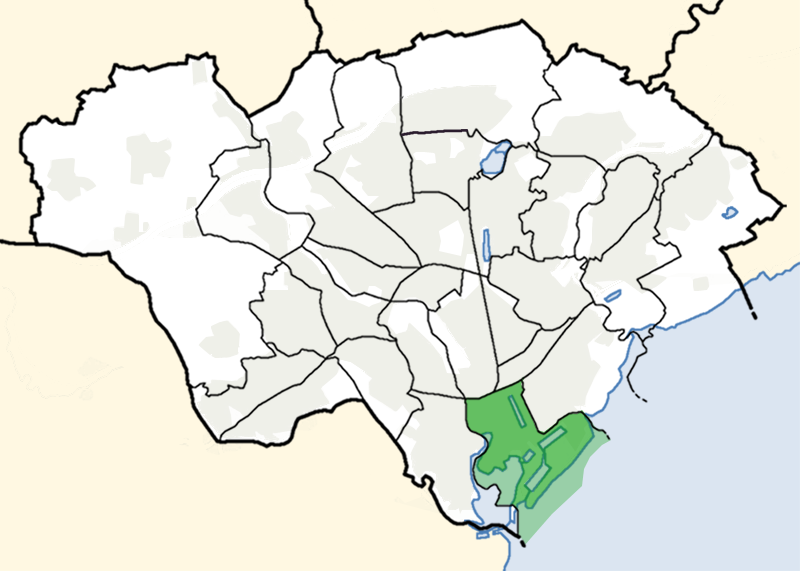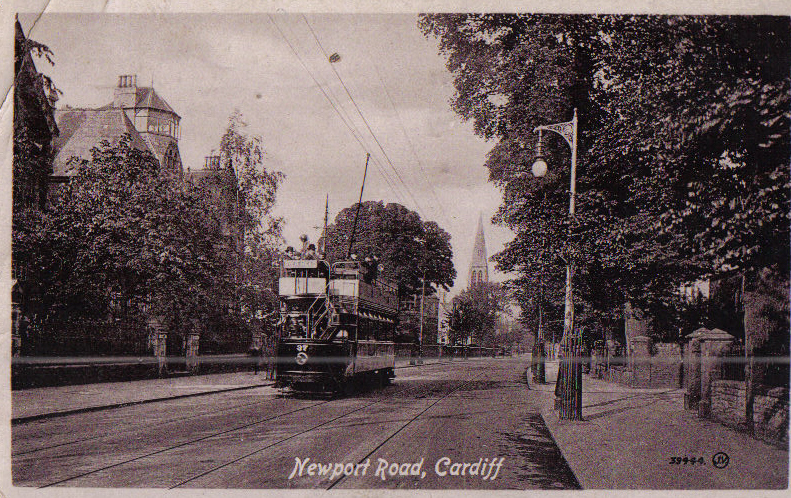|
County Hall, Cardiff
The County Hall ( cy, Neuadd y Sir) is a municipal building located beside the disused Bute East Dock in the Atlantic Wharf area of Butetown, Cardiff. Formerly the home of South Glamorgan County Council, it is now the headquarters of Cardiff Council. History Design and construction Following the implementation of the Local Government Act 1972, which broke up Glamorgan County Council and established South Glamorgan County Council, the new county council was initially headquartered in a building on Newport Road, Cardiff. After finding this arrangement inadequate for their needs, the new county leaders decided to procure a purpose-built county hall: the site they selected was derelict land on the west side of Bute East Dock. The building was designed by J. R. C. Bethell, the County Architect for South Glamorgan, and built between 1986 and 1987. This was at a time when the surrounding area consisted mainly of post-industrial dereliction. Hence the construction of the new buildi ... [...More Info...] [...Related Items...] OR: [Wikipedia] [Google] [Baidu] |
Atlantic Wharf
Atlantic Wharf ( cy, Glanfa Iwerydd) is a southern area of the city of Cardiff, Wales. It is primarily an area of new houses and apartments located on the west side of the disused Bute East Dock and to the east of Lloyd George Avenue. It also includes a number of refurbished dock warehouses, modern hotels, the Red Dragon Centre and Cardiff Council's County Hall. Atlantic Wharf lies in the Butetown electoral division of Cardiff and the Cardiff South and Penarth constituency for the UK Parliament and the Senedd. History The Bute East Dock (originally called the East Bute Dock) was constructed to ease pressure on the existing Bute Dock in the 1850s. It was opened by the 12-year-old Third Marquess of Bute on 14 September 1859.Richards, John ''CARDIFF: A Maritime History.'' Tempus Publishing, 2005, p.47-48 The new dock was 1,310 m in length and up to 152m wide. It was surrounded by railway sidings and large warehouses. Eventually the Bute East Dock was closed in 1970. The railw ... [...More Info...] [...Related Items...] OR: [Wikipedia] [Google] [Baidu] |
James Callaghan
Leonard James Callaghan, Baron Callaghan of Cardiff, ( ; 27 March 191226 March 2005), commonly known as Jim Callaghan, was Prime Minister of the United Kingdom from 1976 to 1979 and Leader of the Labour Party from 1976 to 1980. Callaghan is the only person to have held all four Great Offices of State, having served as Chancellor of the Exchequer from 1964 to 1967, Home Secretary from 1967 to 1970 and Foreign Secretary from 1974 to 1976. He was a Member of Parliament (MP) from 1945 to 1987. Born into a working-class family in Portsmouth, Callaghan left school early and began his career as a tax inspector, before becoming a trade union official in the 1930s; he served as a lieutenant in the Royal Navy during the Second World War. He was elected to Parliament at the 1945 election, and was regarded as being on the left wing of the Labour Party. He was appointed to the Attlee government as a parliamentary secretary in 1947, and began to move increasingly towards the right wing ... [...More Info...] [...Related Items...] OR: [Wikipedia] [Google] [Baidu] |
Politics Of Cardiff
Politics (from , ) is the set of activities that are associated with making decisions in groups, or other forms of power relations among individuals, such as the distribution of resources or status. The branch of social science that studies politics and government is referred to as political science. It may be used positively in the context of a "political solution" which is compromising and nonviolent, or descriptively as "the art or science of government", but also often carries a negative connotation.. The concept has been defined in various ways, and different approaches have fundamentally differing views on whether it should be used extensively or limitedly, empirically or normatively, and on whether conflict or co-operation is more essential to it. A variety of methods are deployed in politics, which include promoting one's own political views among people, negotiation with other political subjects, making laws, and exercising internal and external force, including war ... [...More Info...] [...Related Items...] OR: [Wikipedia] [Google] [Baidu] |
Buildings And Structures In Cardiff
A building, or edifice, is an enclosed structure with a roof and walls standing more or less permanently in one place, such as a house or factory (although there's also portable buildings). Buildings come in a variety of sizes, shapes, and functions, and have been adapted throughout history for a wide number of factors, from building materials available, to weather conditions, land prices, ground conditions, specific uses, prestige, and aesthetic reasons. To better understand the term ''building'' compare the list of nonbuilding structures. Buildings serve several societal needs – primarily as shelter from weather, security, living space, privacy, to store belongings, and to comfortably live and work. A building as a shelter represents a physical division of the human habitat (a place of comfort and safety) and the ''outside'' (a place that at times may be harsh and harmful). Ever since the first cave paintings, buildings have also become objects or canvasses of much artistic ... [...More Info...] [...Related Items...] OR: [Wikipedia] [Google] [Baidu] |
Fly-tipping
Illegal dumping, also called fly dumping or fly tipping ( UK), is the dumping of waste illegally instead of using an authorized method such as curbside collection or using an authorized rubbish dump. It is the illegal deposit of any waste onto land, including waste dumped or tipped on a site with no license to accept waste. The United States Environmental Protection Agency developed a “profile” of the typical illegal dumper. Characteristics of offenders include local residents, construction and landscaping contractors, waste removers, scrap yard operators, and automobile and tire repair shops. Terminology Illegal dumping is typically distinguished from littering by the type and amount of material and/or the manner in which it is discarded. An example of littering could be throwing a cigarette on the ground. However, emptying a rubbish bin with no permission in a public or private area can be classified as illegal dumping. The term ''fly tipping'' is derived from the verb '' ... [...More Info...] [...Related Items...] OR: [Wikipedia] [Google] [Baidu] |
CCTV
Closed-circuit television (CCTV), also known as video surveillance, is the use of video cameras to transmit a signal to a specific place, on a limited set of monitors. It differs from broadcast television in that the signal is not openly transmitted, though it may employ point-to-point (P2P), point-to-multipoint (P2MP), or mesh wired or wireless links. Even though almost all video cameras fit this definition, the term is most often applied to those used for surveillance in areas that require additional security or ongoing monitoring (Videotelephony is seldom called "CCTV"). Surveillance of the public using CCTV is common in many areas around the world. In recent years, the use of body worn video cameras has been introduced as a new form of surveillance, often used in law enforcement, with cameras located on a police officer's chest or head. Video surveillance has generated significant debate about balancing its use with individuals' right to privacy even when in public. ... [...More Info...] [...Related Items...] OR: [Wikipedia] [Google] [Baidu] |
Cardiff Bus
Cardiff Bus ( cy, Bws Caerdydd) is the dominant operator of bus services in Cardiff, Wales and the surrounding area, including Barry and Penarth. The company is wholly owned by Cardiff Council and is one of the few municipal bus companies to remain in council ownership. History While horse buses (and later horse trams) had run in the city since 1845, Cardiff Bus can trace its history back to May 1902, when Cardiff Council took over and electrified a tram line between Roath and the city centre. It had been previously run by the Cardiff Tramway Company. The resultant Cardiff Corporation Tramways spent the next three decades extending its electric tram network, and at its peak in 1927 ran 141 electric trams over 18 miles of line. On Christmas Eve 1920, the corporation introduced its first bus, although the first motor bus route was operated by the Tramway Company from 1907. [...More Info...] [...Related Items...] OR: [Wikipedia] [Google] [Baidu] |
Cardiff Heliport
Cardiff Heliport ( cy, Maes Hofrenyddion Caerdydd), is a heliport located in Tremorfa, Cardiff, Wales, approximately from the city centre. The heliport is leased and operated by Wales Air Ambulance. The heliport cost £3.8 million to build and was the operating base for the South Wales Police helicopter A helicopter is a type of rotorcraft in which lift and thrust are supplied by horizontally spinning rotors. This allows the helicopter to take off and land vertically, to hover, and to fly forward, backward and laterally. These attributes .... The heliport can also handle passenger traffic, especially during sporting events at the Millennium Stadium. In 2016, the heliport became the base for an additional helicopter from the Wales Air Ambulance fleet, operating specialist hospital transfers with in-flight incubators to transport babies. References External links * * Transport in Cardiff Heliports in Wales Airports in Wales Buildings and struct ... [...More Info...] [...Related Items...] OR: [Wikipedia] [Google] [Baidu] |
Local Government (Wales) Act 1994
The Local Government (Wales) Act 1994 (c. 19) is an Act of the Parliament of the United Kingdom which amended the Local Government Act 1972 to create the current local government structure in Wales of 22 unitary authority areas, referred to as principal areas in the Act, and abolished the previous two-tier structure of counties and districts. It came into effect on 1 April 1996. Background In June 1991, the Secretary of State for Wales, David Hunt, published a consultation paper on reform of local government in Wales. The paper proposed the replacing of the existing two-tier system of administrative counties and districts, established by the Local Government Act 1972 in 1974, with unitary authorities. The number and size of the unitary areas was not set down, instead three options were given for ten, twenty or twenty-four new councils. On 3 March 1992 the Secretary of State made a statement in the House of Commons, in which he stated that the number of proposed unitary authorit ... [...More Info...] [...Related Items...] OR: [Wikipedia] [Google] [Baidu] |
South Glamorgan
, Government= South Glamorgan County Council , Status= Non-metropolitan county (1974–1996) Preserved county (1996–) , Start= 1974 , End= 1996 , Arms= , HQ= County Hall, Butetown, Cardiff , Replace= Cardiff Vale of Glamorgan Preserved county of South Glamorgan , Map= ''South Glamorgan shown within Wales as a preserved county'' , PopulationLast= 445,000 (est; 2003 borders) Ranked 3rd , PopulationLastYear= 2007 , AreaFirst= 475 km² Ranked 8th , AreaFirstYear= 2003 , AreaLast= , AreaLastYear= , Divisions= Non-metropolitan districts , DivisionsNames= 1. City of Cardiff 2. Vale of Glamorgan , Code= SGM , CodeName= Chapman code South Glamorgan ( cy, De Morgannwg) is a preserved county of Wales. It was originally formed in 1974 under the Local Government Act 1972, ... [...More Info...] [...Related Items...] OR: [Wikipedia] [Google] [Baidu] |
Butetown
Butetown (or ''The Docks'', cy, Tre-biwt) is a district and community in the south of the city of Cardiff, the capital of Wales. It was originally a model housing estate built in the early 19th century by the 2nd Marquess of Bute, for whose title the area was named. Commonly known as "Tiger Bay", this area became one of the UK's first multicultural communities with people from over 50 countries settled here by the outbreak of the First World War, working in the docks and allied industries. Some of the largest communities included the Somalis, Yemenis and Greeks, whose influence still lives on today. A Greek Orthodox church still stands at the top of Bute Street. It is known as one of the "five towns of Cardiff", the others being Crockherbtown, Grangetown, Newtown and Temperance Town. The population of the ward and community taken at the 2011 census was 10,125. It is estimated that the Butetown's population increased to 14,094 by 2019. History By 1911 the proportion of ... [...More Info...] [...Related Items...] OR: [Wikipedia] [Google] [Baidu] |
Newport Road
Newport Road is a 4.7 mi (7.5 km) road leading east from the centre of Cardiff, Wales, towards Newport, until it joins the A48 at St Mellons. Description Newport Road follows the route of the A4161 through Roath and the B4487 through Rumney, Llanrumney and St Mellons. Until 1971 Newport Road was part of the main A48 route through South Wales (via Cardiff city centre). On 19 November 1971 the route was renumbered when the A48 was re-routed along the Eastern Avenue dual carriageway to the north. Notable landmarks on Newport Road include the Cardiff Royal Infirmary (CRI), built in 1884. Between 1883 and 1909 the University College of South Wales and Monmouthshire (later Cardiff University) was founded and based on Newport Road. The stretch between Cardiff city centre and the CRI is now dominated by high-rise buildings and office blocks, including Eastgate House, Holland House and offices used as the headquarters of South Glamorgan County Council until 1986. ... [...More Info...] [...Related Items...] OR: [Wikipedia] [Google] [Baidu] |


.jpg)






